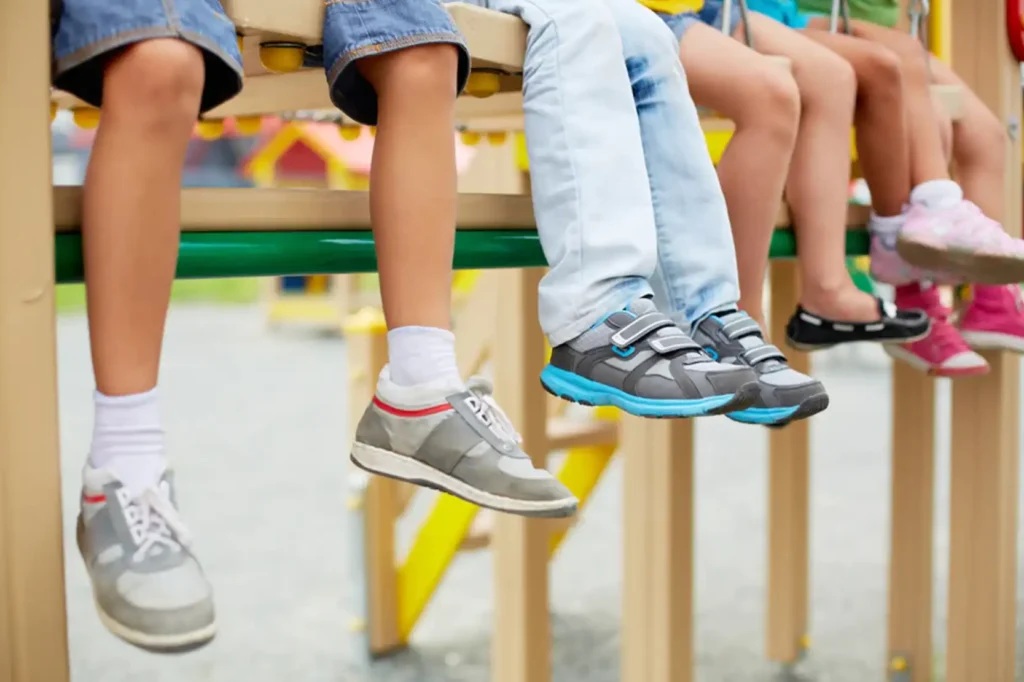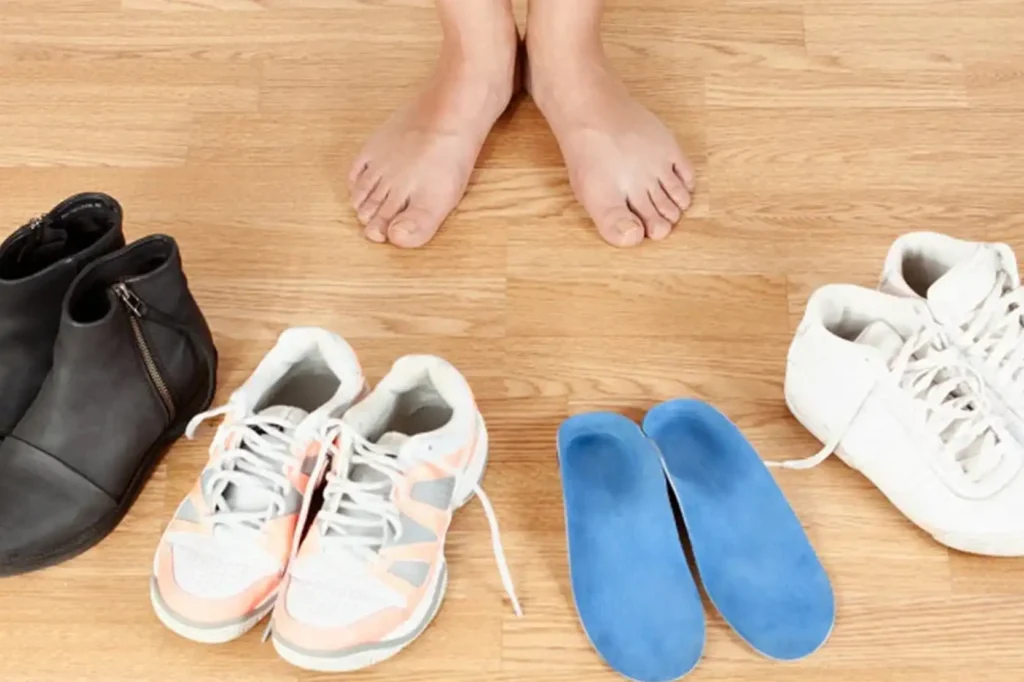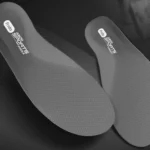Looking for the best children’s insoles for shoes? This complete guide covers everything you need to know from why kids need insoles to what features to look for.
Introduction to Children’s Insoles for Shoes:
Best children’s insoles for shoes provide proper arch support, shock absorption, and cushioning to promote healthy foot development and prevent pain or fatigue. If you’re a parent, you already know how fast your child grows including their feet! One day their shoes fit perfectly, the next they’re complaining about pinching or pain. But beyond just keeping up with growth spurts, there’s another important factor that often gets overlooked: foot support. That’s where children’s insoles for shoes come into play. These small inserts can make a big difference in how comfortable and supported your child feels while walking, running, or playing all day.
Insoles aren’t just for adults with foot pain. In fact, kids can benefit even more from them because their bones and joints are still developing. Whether your child has flat feet, high arches, overpronation, or simply spends a lot of time on their feet, the right insole can improve alignment, posture, and even reduce the risk of injury. Let’s dive deep into what you need to know before choosing the best insoles for your child’s shoes.
Most children can start using insoles as early as 3–4 years old, especially if they show signs of flat feet or discomfort.
Why Do Children Need Insoles:
Children’s feet are still developing, and that means they’re more vulnerable to problems like flat feet, poor arch development, or overpronation. If left unaddressed, these issues can lead to discomfort, fatigue, or more serious biomechanical problems as they grow. Insoles help by supporting the arch, aligning the foot properly, and absorbing impact from running or walking.
Many kids wear standard shoes that don’t provide the structure or cushioning growing feet need. That’s why children’s insoles can be a game-changer. They add a layer of support that helps promote proper foot growth, aids balance, and improves comfort. For active kids or those who experience pain or discomfort, insoles can significantly reduce pressure and provide relief all while fitting seamlessly into their existing shoes.
Key Features to Look for in Children’s Insoles:
When choosing the best children’s insoles, there are a few features you’ll want to prioritize. First, arch support is critical. Even if your child doesn’t have flat feet, proper arch support ensures the foot is in the right position and reduces stress on the ankles and knees. Look for insoles with a contoured or structured shape rather than just flat padding.
Secondly, consider the material. Breathable, moisture-wicking fabrics help keep feet dry and reduce odor especially important for kids who run around all day. Cushioning is also essential. Gel inserts or foam padding help absorb impact and prevent foot fatigue. Finally, check for non-slip features so the insole stays in place and doesn’t bunch up during wear.
Signs Your Child Might Need Insoles:
If your child frequently complains about foot, ankle, or knee pain, it’s w evaluating their footwear and gait. Flat feet, inward rolling ankles (overpronation), or even frequent tripping can all indicate a biomechanical issue that insoles might help correct.
Another common sign is uneven wear on the soles of their shoes. If the heel wears out on one side more than the other, it may suggest that your child’s foot alignment is off. In such cases, otic insoles for kids can offer both corrective and preventive benefits supporting the foot, aligning the body, and enhancing comfort during physical activity.

Best Types of Insoles for Kids:
There are generally two types of insoles for kids: comfort insoles and otic insoles. Comfort insoles focus mainly on providing extra cushioning for everyday wear, while otic insoles are designed to correct specific foot issues like flat feet, high arches, or heel pain.
For children who are active in sports or on their feet a lot during the day, gel or memory foam insoles work well because they offer excellent shock absorption. If your child has a diagnosed foot condition like plantar fasciitis or flat feet, then a custom otic or pediatric otic may be needed. These are often prescribed by a podiatrist for targeted correction and support.
Top 3 Kids Insole brand:
- Fidrox Kids Orthotic Arch Support Shoe Insoles [https://amzn.to/43c2OAT]
- RENESMEE Orthotic Arch Support Shoe Insoles [https://amzn.to/4jBhmQl]
- FOVERA Arch Support Gel Insole [https://amzn.to/4k5HSkV]
How to Fit and Maintain Children’s Insoles:
Proper fit is crucial when it comes to insoles. Always choose insoles that match your child’s shoe size and trim-to-fit models if needed. The insole should lie flat in the shoe without curling up at the edges or sliding around. It’s best to try them in the shoes your child wears most often like school shoes or sneakers.
As for maintenance, most insoles are easy to clean with a damp cloth and mild soap. Encourage your child to remove them regularly to air them out, especially after a long day. Check them monthly for signs of wear or flattening, and be ready to replace them every 4–6 months, depending on usage and growth.
Benefits of Children’s Insoles for Growing Feet:
Investing in good children’s insoles can offer long-term health benefits. They encourage proper foot alignment, reduce muscle fatigue, and help distribute weight more evenly which is especially helpful during growth spurts. Insoles can also enhance sports performance and reduce the likelihood of injury from poor gait mechanics.
For kids with foot issues, insoles act as early intervention tools. By correcting imbalances early, you can help avoid chronic issues like shin splints, knee pain, or lower back pain later in life. Plus, your child will be more comfortable, confident, and active which is what every parent wants.
FAQ
Most frequent questions and answers
Most children can start using insoles as early as 3–4 years old, especially if they show signs of flat feet or discomfort.
Yes, specially designed arch-supporting insoles can help manage flat feet and improve alignment in growing children.
Replace them every 4–6 months or sooner if your child outgrows them or they show signs of wear.
Conclusion:
Whether your child is active, experiencing foot pain, or simply needs better support during the day, the right insole can make a big difference. In conclusion, children’s insoles for shoes play a vital role in supporting growing feet and ensuring proper alignment, comfort, and balance. By choosing quality materials and the right fit, you’re investing in your child’s long-term foot health and daily comfort. Don’t overlook this small change that can lead to big improvements in mobility and confidence.





